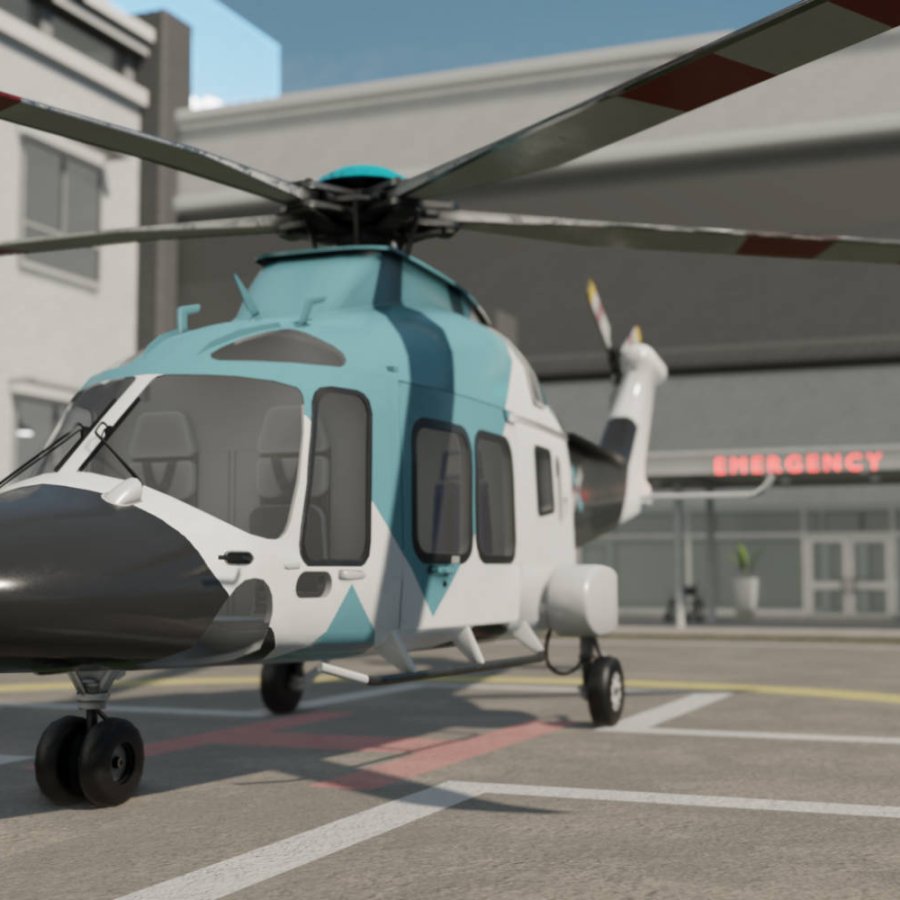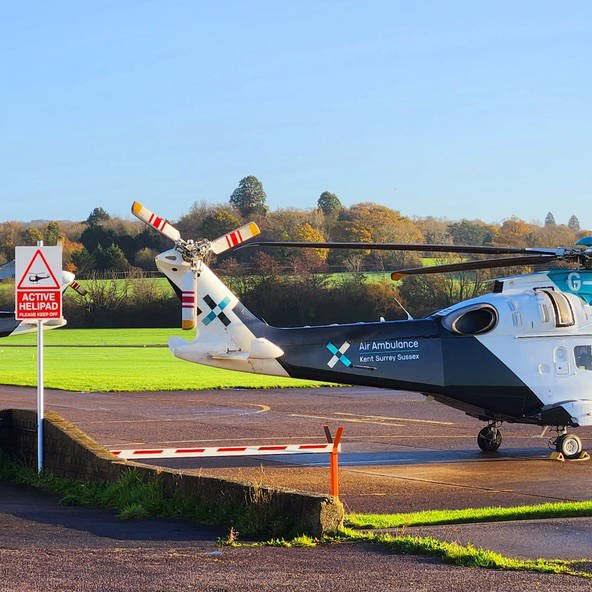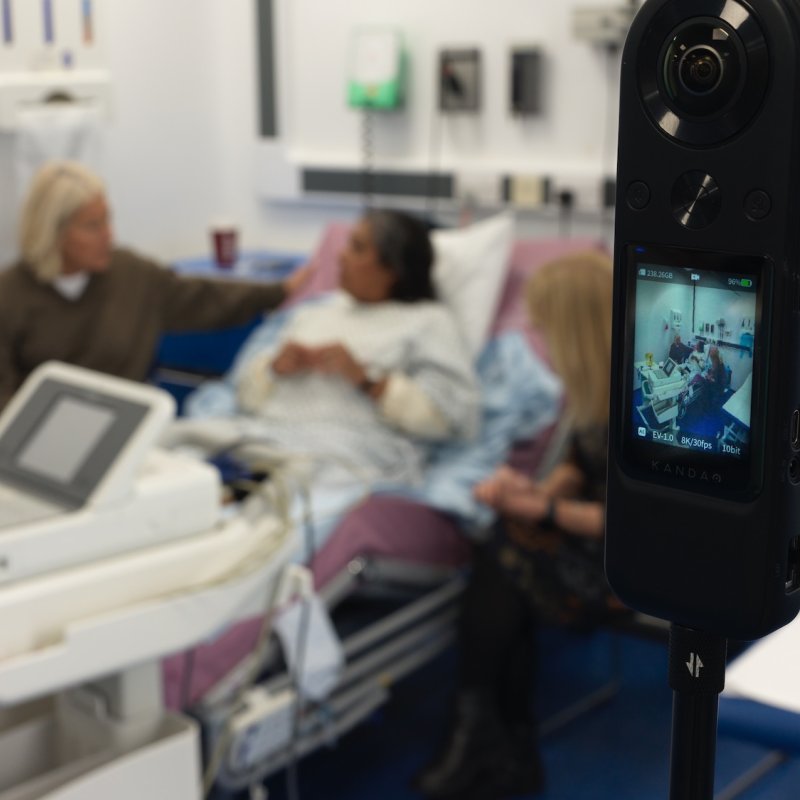Contact Us
+44 20 32897141 / 1 Pickle Mews, London, SW9 0FJ
The Client & Concept
Air Ambulance Charity Kent Surrey Sussex is a charity that provides critical care, with pre-hospital medical teams who support the regional NHS ambulance trust. The team of sector-leading experts respond to over 3,300 incidents annually across the region and reach location within 30 minutes. The helicopters operate as flying emergency rooms.
Undertaking healthcare procedures on a helicopter is a time-pressured, complex, and unique situation, and medical professionals being prepared for this moment is vital. Unlike a standard surgery or medical room, helicopters comprise specialist on-board MedTech equipment that has been designed to fit within the small space that exists. The difficulty with this, however, is it limits the opportunity to train on board - that is until virtual reality entered the space.
The Brief
KSS Air Ambulance Charity was seeking a training format that would enable them to train the use of equipment and the helicopter cabin in a safe environment, where trainees and the charity need not worry that expensive equipment and vehicles could be broken. They sought innovative VR technology that would support skills acquisition and retention.
“Our project was ambitious. We wanted to create a virtual helicopter that would allow lots of users to interact with the machine. The VR simulation would allow a degree of initial orientation training to groups of staff before they would need to be up close to the helicopter. This would help minimise risk to staff (and machines) and allow staff with the appropriate technology at home to access training.”
Allan McHenry, Assistant Director of Service Delivery (Clinical) at Kent Surrey Sussex Air Ambulance Charity
A crucial aim of these training films was to engage both staff and even non-medical volunteers.
VR Training for Helicopter Operations
These helicopters respond to emergency situations, and even entering the aircraft with a patient poses its own risks. For example, just approaching and opening the door you need to be conscious of the noise, the downdraft and sidewash force, and an array of possible dangers.
The 6DoF for this project was one of the most challenging creations to date, due to the scale of the models and environments, and also the complexities of replicating the users’ interactions needed to open the sliding doors of the helicopter. The introduction of 6DoF led to our first iteration of ‘teleport’ mechanics, enabling users to move large distances in VR without the need for physical space.
Developing the VR Training
Accuracy is a vital element of any medical VR simulation, and the training needs to be instantly transferable to the real-life scenario. To build this accuracy in the simulation, ExR took a collaborative approach with KSS and drew every bit of detail from the proposed scenario.
The process of the project was as follows:
- Initial Consultation – We visited the KSS Air Ambulance Charity to scope out the needs of the team and ran through multiple pre-production visits.
- 360°VR Filming – We joined the team to film them enacting training of an in-flight procedure using 360-degree filming technology, which took place over two days to provide enough flexibility to capture content. To add to this, reference footage and 360° still images were taken to help with the development of the virtual environment.
- Testing & Augmenting – Based on the footage gained, we tested the potential for augmenting or even replacing some of the real-life training. In this case, the helicopter motion was the obvious choice.
- The Simulation – Due to aviation rules surrounding objects attached to an aircraft, in this circumstance we were unable to film inside the moving helicopter - so, we needed to create this element as a simulation to replicate the sensation of flying. However, we are now investigating custom-made camera brackets that will be approved for in-flight motion for airborne procedures.
Delivering on Air Ambulance VR
In this project, we developed a series of equipment training, alongside ground-based simulated procedures in the cabin of the aircraft. These films deliver a full 6DoF VR experience enabling users to effectively learn the basics of safely approaching and entering an aircraft and adjusting fixed medical equipment in the cabin (e.g. the patient bed).
The 360°VR was co-created with Allan to derive an accurate representation of how the training would take place in real life to give trainees as much of a real experience as possible.
From there, we modelled a replica of the charity’s main aircraft, including the branding. The mechanics for operating the doors and furniture within the helicopter were custom coded to simulate the real-world operation of this specific aircraft.
Delivered as a series, these 360° films are a vital module to educate users about the modifications made to hospital equipment for in-flight service. The simulated procedures in the cabin provide a sense of what it’s like to perform emergency procedures in a confined space.
Unique Medical VR Content
The module creates a unique and engaging collection of content for all users in the ExR platform and even supports those typically not involved in first response with an understanding of how to act safely in and around the aircraft. These films transport users to an unachievable environment and train with replicas of real-life medical equipment. The perfect example of the power of VR.
“ExR added a human touch to a VR online platform that chimed with our charity’s ethos of people- centred, purpose-driven and values led. I believe that ExR offers a level of detail and desire to deliver the solution we needed, not an off-the-shelf product they wanted to sell.”
Allan McHenry
The Future of VR
The potential that VR technology offers is expansive. As users and advocates of the technology, KSS is already exploring how virtual reality can be expanded into new fundraising applications which could incorporate virtual tours of the aircraft or immersive simulations.
Want to join in?
Please type us a message.




